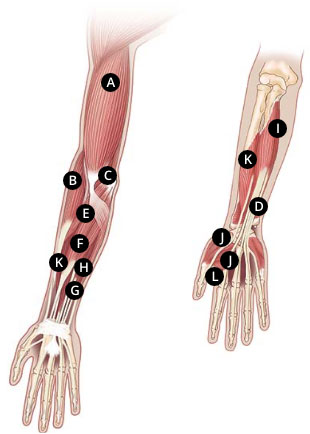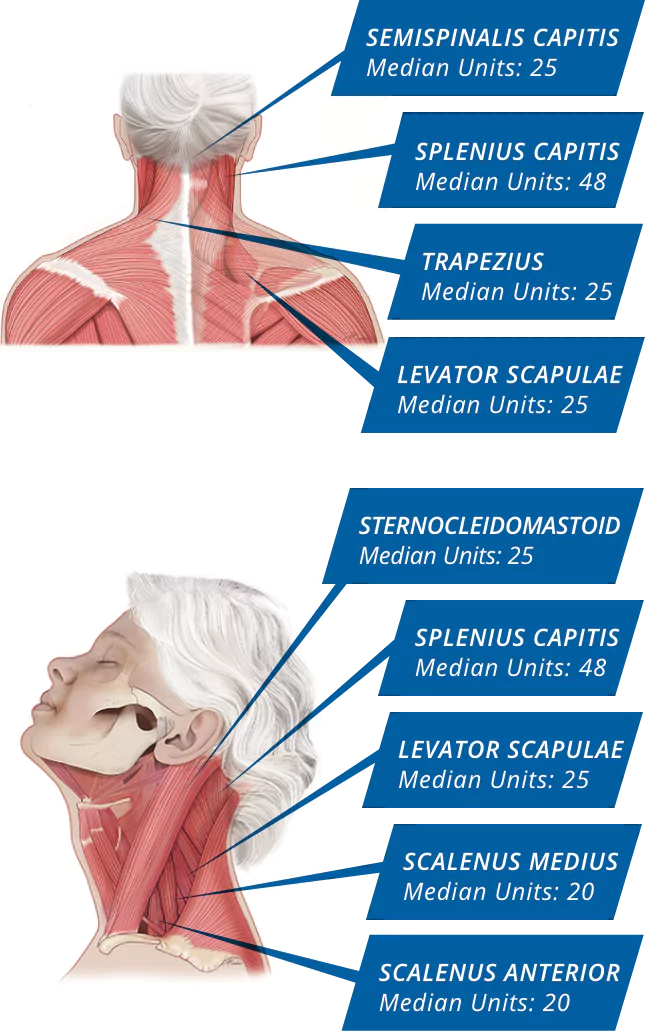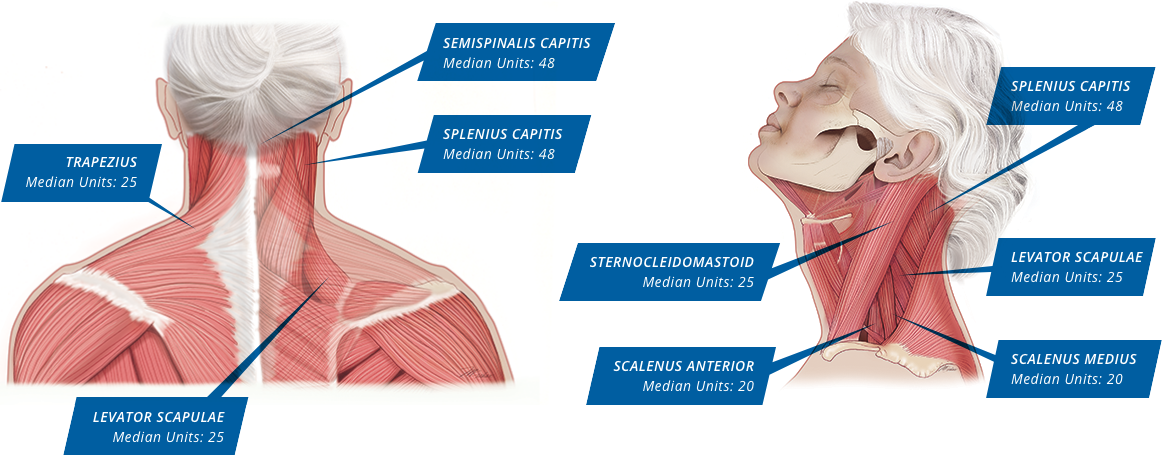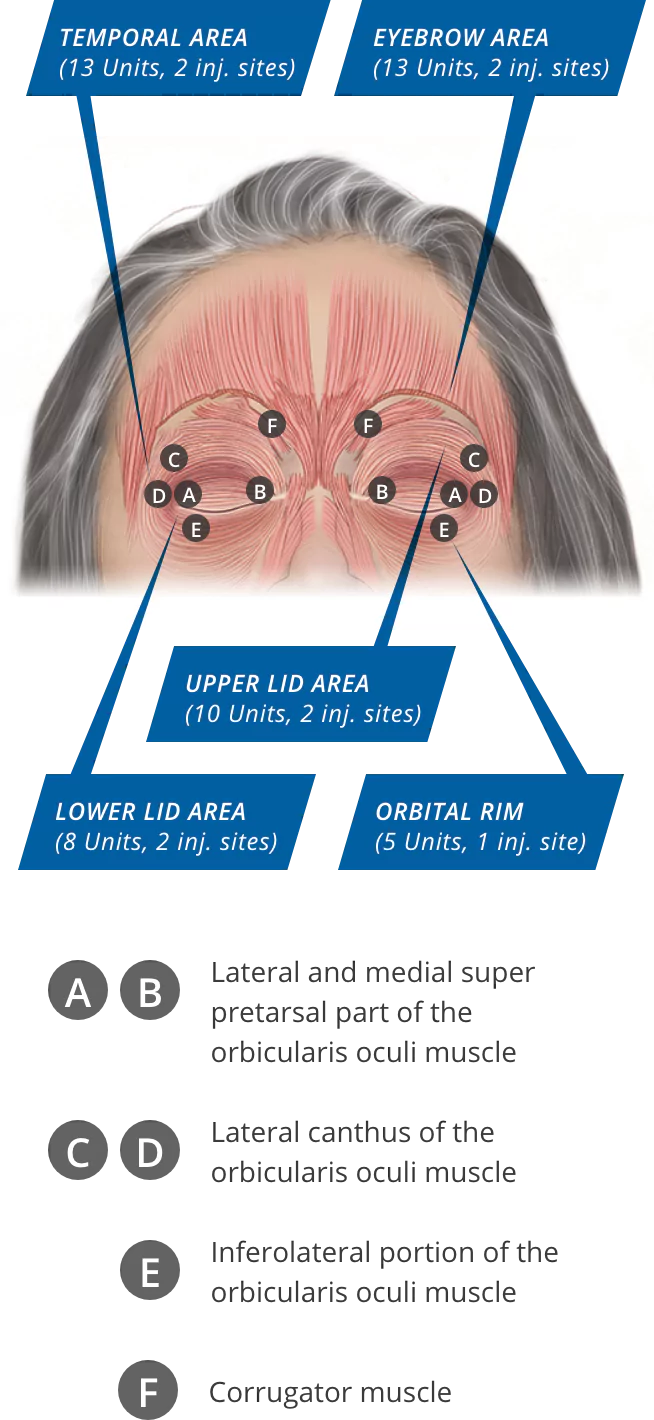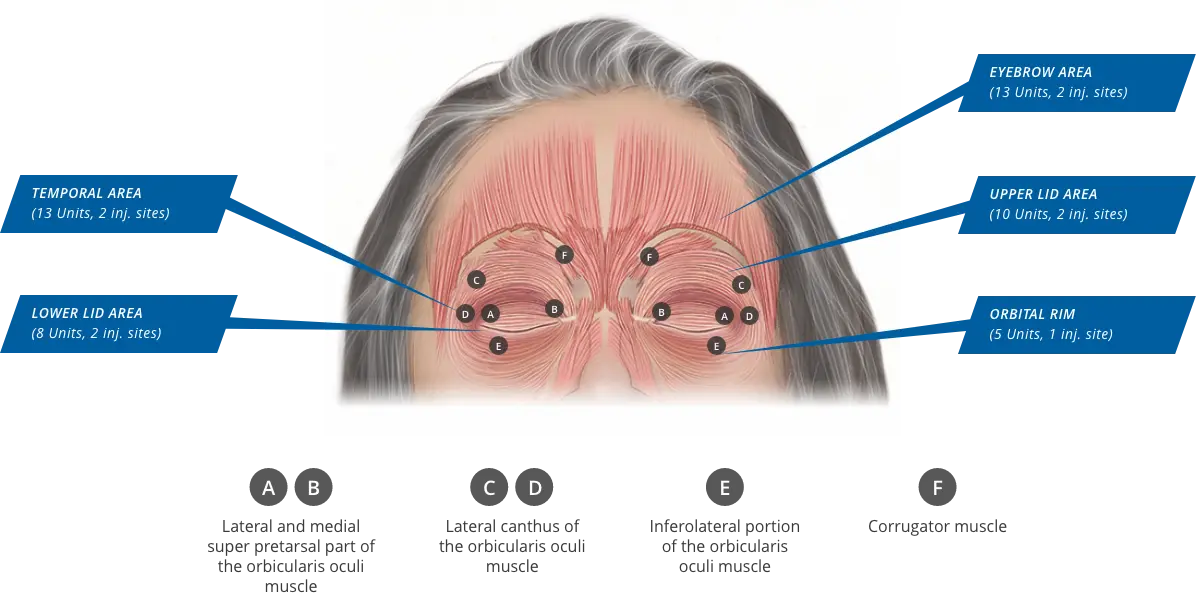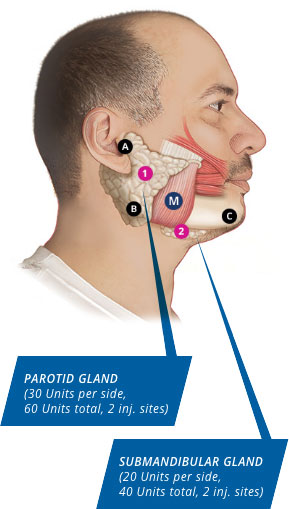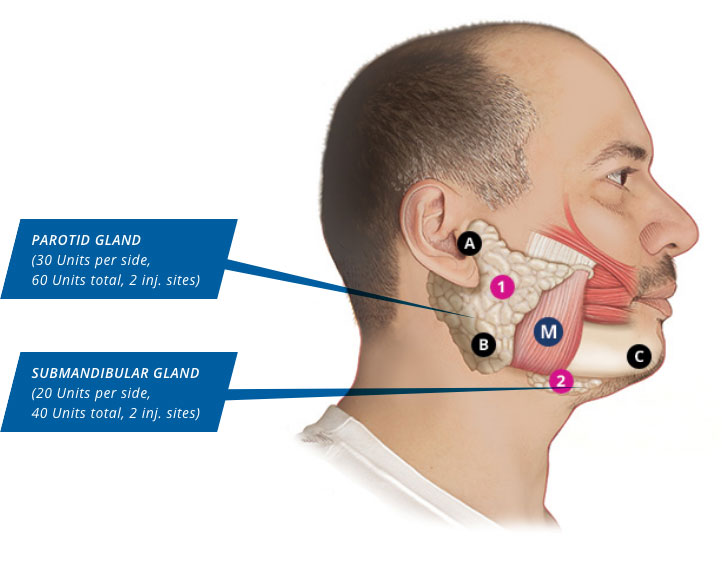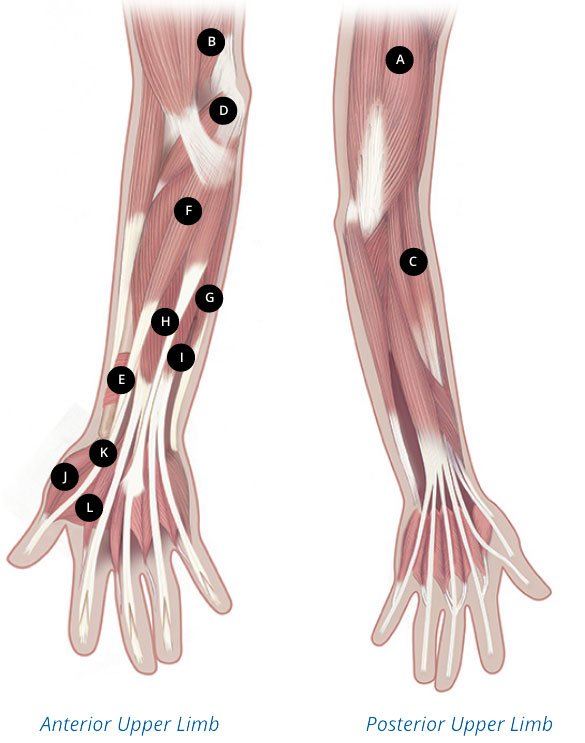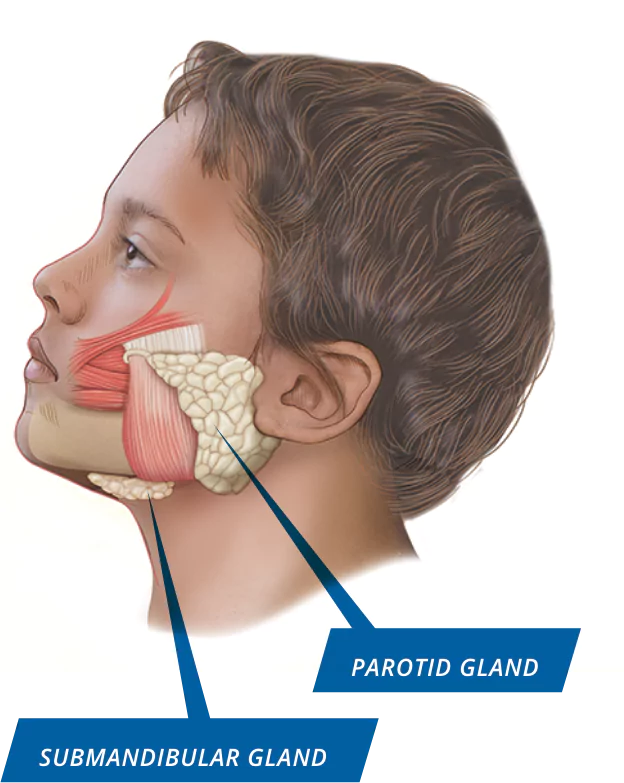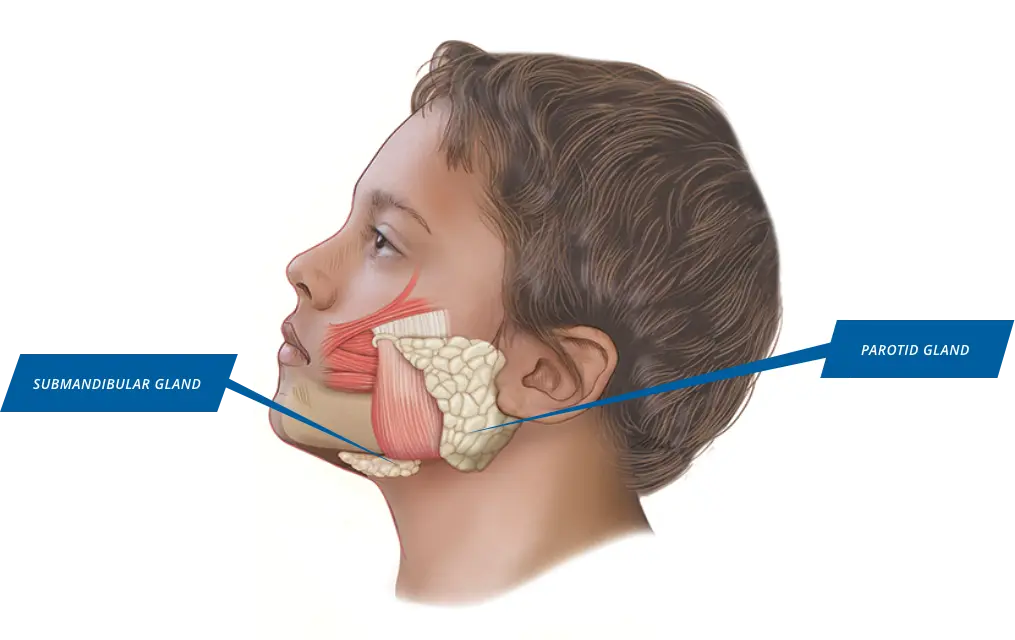Does not require refrigeration prior to reconstitution1
Can be shipped and stored at room temperature
Better for transport and multiple office locations
Not dependent on the cold chain from pharmacy to office
On hand when your patients need it
XEOMIN has been studied in 6.5 million patients with various conditions in more than 70 countries, for more than 12 years2
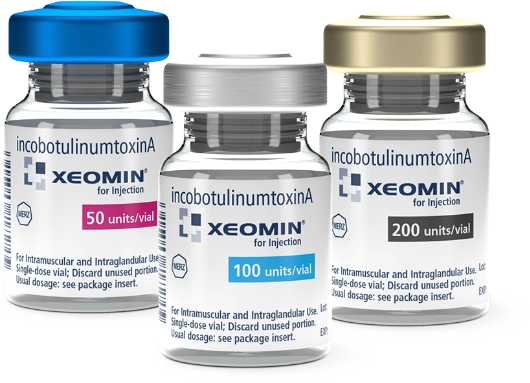
Reconstitution to Flip For
Prior to injection, reconstitute each vial of XEOMIN with sterile, preservative-free 0.9% sodium chloride injection, USP. A 20-27-gauge short-bevel needle is recommended for reconstitution. Draw up the recommended volume of preservative-free 0.9% sodium chloride injection, USP into a syringe.1
IMPORTANT – Do not pry or pop the cap off of the XEOMIN vial, as it is vacuum-packed and doing so will result in XEOMIN powder dispersing into the air
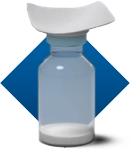
Step 1: Vial preparation
Clean the exposed portion of the rubber stopper of the vial with alcohol (70%) prior to insertion of the needle.

Step 2: Saline injection
After vertical insertion of the needle through the rubber stopper, the vacuum will draw the saline into the vial. Gently inject any remaining saline into the vial to avoid foam formation. If the vacuum does not pull the saline into the vial, then XEOMIN must be discarded.
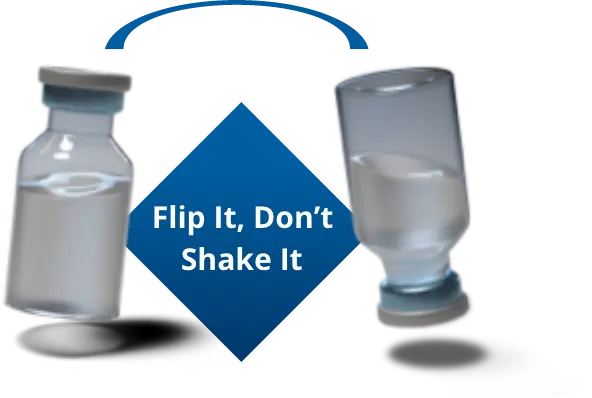
Step 3: Mixing
Remove the syringe from the vial and mix XEOMIN with the saline by carefully swirling and inverting/flipping the vial—do not shake vigorously.
Reconstituted XEOMIN is a clear, colorless solution free of particulate matter. XEOMIN should not be used if the reconstituted solution has a cloudy appearance or contains floccular or particulate matter
Reconstitution Video
Watch how to reconstitute XEOMIN
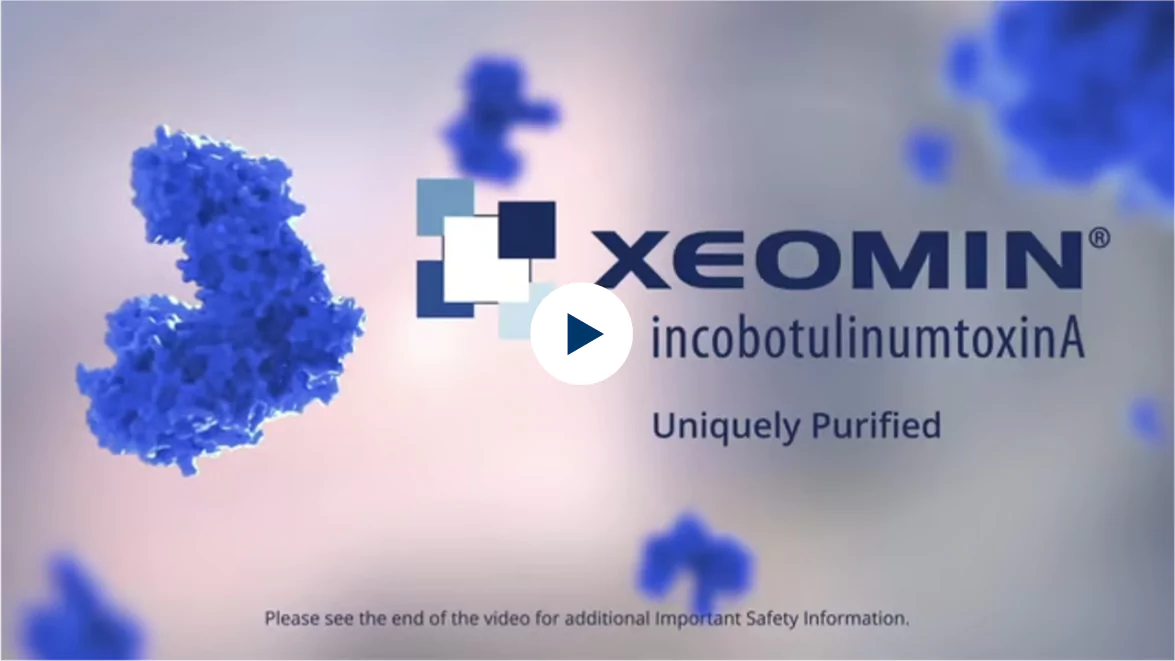
When using 8 mL of diluent for a 100-Unit or 200-Unit vial of XEOMIN, complete the following steps1
- Reconstitute a 100-Unit or 200-Unit vial of XEOMIN with 4 mL of preservative-free 0.9% Sodium Chloride Injection, USP.
- Withdraw 4 mL of preservative-free 0.9% Sodium Chloride Injection, USP, into an appropriately sized syringe for 8 mL in total.
- Using the same syringe, draw up the 4 mL of XEOMIN solution from the reconstituted vial and mix gently.
When using 16 mL of diluent for a 200-Unit vial of XEOMIN, complete the following steps1
- Reconstitute a 200-Unit vial of XEOMIN with 4 mL of preservative-free 0.9% Sodium Chloride Injection, USP.
- Withdraw 12 mL of preservative-free 0.9% Sodium Chloride Injection, USP, into an appropriately sized syringe for 16 mL in total.
- Using the same syringe, draw up the 4 mL of XEOMIN solution from the reconstituted vial and mix gently.

